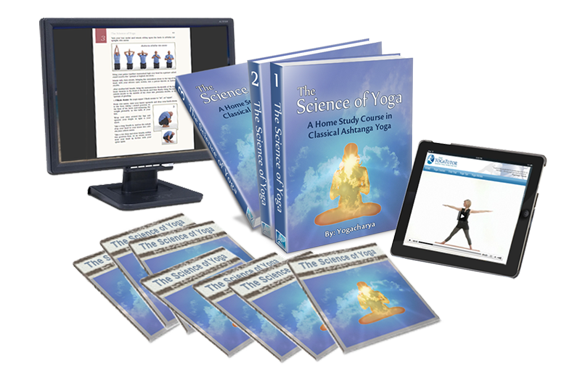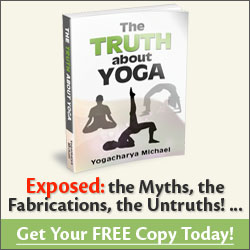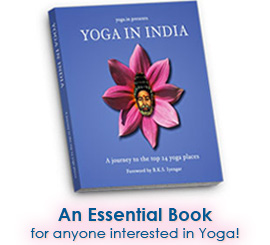[ Excerpt from The Science of Yoga, page 432 ]
The Prana Hasta Mudras
For the practice of certain pranayamas, in particular those which require the regulation of the breath through one specific nostril or the other, special hand mudras are employed, referred to as the prana hasta mudras.
The specific finger positions in these mudras stimulate specific nerve points called nadi bindus, or energetic points in the pranamaya kosha.
These gestures become increasingly useful as one progresses to higher levels of the pranayama practices. However, it is important in the early stages of practice to pay particular attention to these mudras as well, and to be meticulous in their proper performance in order to gain the greatest benefits now and later on.
Here are two such gestures, nasarga mudra and Vishnu mudra. Each are employed using the right hand.
General Directives:
If the arm should tire in the beginning, the left hand can be used to support the right elbow. The nostrils should be closed gently, without excessive pressure.
The head should be held up and facing directly forward, with the eyes closed.
Nasarga Mudra
- The easier to master of the two most common mudras employed in the various alternate nostril breathing techniques of yoga is the nasarga mudra. Nasika means "nose."
- The second and third fingers (index and middle) of the right hand are bent down at the knuckles.
- The tip of the thumb is used to close the right nostril.
- The fourth and fifth fingers (ring and pinkie) are used to close the left nostril.
Vishnu Mudra
- The third fingertip (middle finger) is placed, with light pressure, against the upper root of the nose, between the brows.
- The index finger is used to close the right nostril.
- The fourth finger (ring finger) is used to close the left nostril.
- The remaining first and fifth fingers (thumb and pinkie) are splayed open, forming a 'V' shape.
Note: These two fingers are directed to points in the pranamaya kosha which influence both the ida (left side) and pingala (right side) nadis.
[Continued...]
---------------------
NOTE: This yoga article is an excerpt from The Science of Yoga, an online yoga training program with streaming yoga videos and 600 pages of step-by-step yoga instruction.

"The Science of Yoga is a course worthy of
leather binding and an honored place in the
finest libraries in the world
... It is indeed a masterful work."
Dr. John Michael Christian
AwakeningWithYoga.com
Learn More About
The Science of Yoga Course
|








